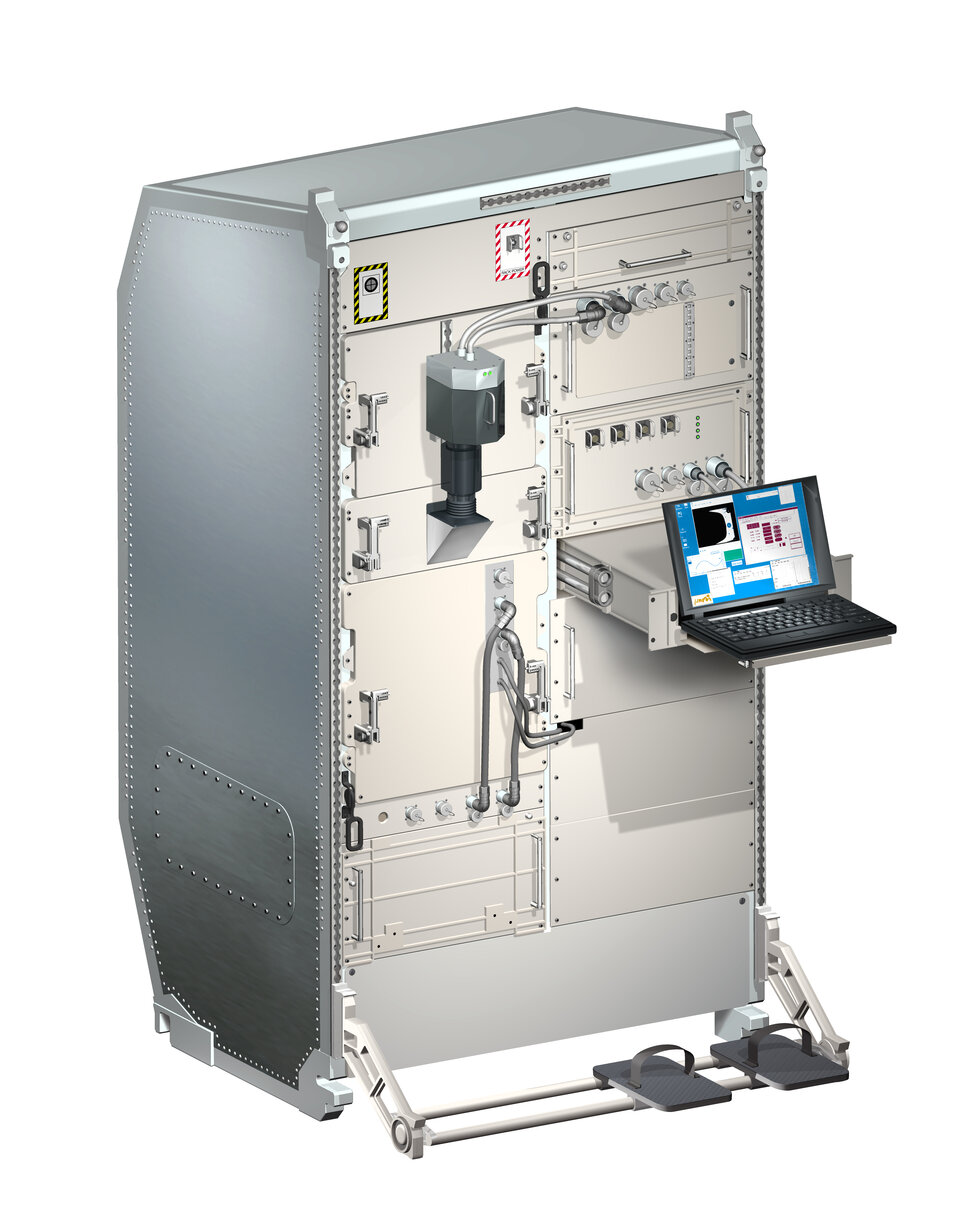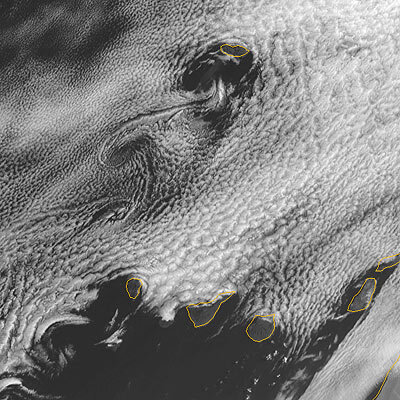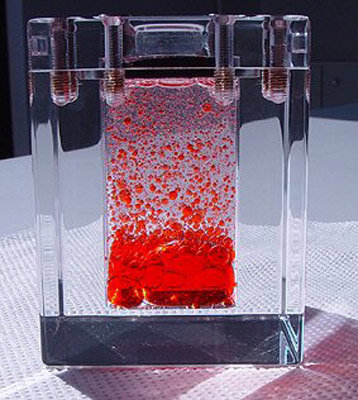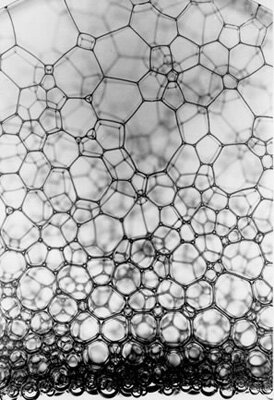Space (fluid) oddities
The subject of the flow of fluids, and particularly of water, fascinates everybody. We can all remember, as children, playing in the bathtub or in mud puddles with the strange stuff. […] The efforts of a child trying to dam a small stream flowing in the street and his surprise at the strange way the water works its way out has its analog in our attempts over the years to understand the flow of fluids.
(Richard Feynman)
1. Fluid Science Laboratory

The Fluid Science Laboratory is a multi-user facility located inside the Columbus laboratory, which is part of the International Space Station. It will study the behaviour of fluids in a weightless environment, allowing investigations into phenomena that are normally masked by gravity-driven convection, sedimentation, and fluid static pressure. The full understanding of these processes requires fundamental research that involves conceiving well-defined models and testing related theories in weightlessness. Moreover, these studies will help to optimise manufacturing processes on Earth and improve the quality of high value products.
2. Fluids: gas, liquids and plasmas

There are four fundamental states of matter - solid, liquid, gas or plasma – which correspond to different characteristics. In solids, molecules are tightly bound to each other and can only vibrate around a fixed position. In contrast, the molecules of a fluid are loosely bound (or not bound at all) to neighbouring molecules, so they can displace one another and “flow”. We can group liquids, gases and plasmas under the common definition of fluids.
The distances between molecules in liquids are generally greater. The forces between the molecules are also weaker than those in solids. Like solids, liquids cannot be compressed, but neither can they support a shear stress, so they continually deform.
The forces between molecules of a gas are very weak so they move freely around, disperse randomly and fill the available space; gases cannot support any applied stress. Plasma, an electrically charged gas, behaves more like a liquid than a gas, due to the electromagnetic forces between its particles.
Fluid mechanics studies the properties of fluids at rest (fluid statics) and in motion (fluid dynamics) and the laws which rule them. Gravity plays a major role in the equations which describe the behaviour of fluids on ground. This is the reason why the study of fluid mechanics in weightlessness can reveal unexpected properties of matter.
3. Convection

Convection is one of the three main processes (together with conduction and radiation) by which heat is transferred. Convection is a phenomenon peculiar to fluids, when heat is transported by means of the macroscopic (large-scale) motion of the fluid itself. In thermal convection, whenever a fluid layer shows a temperature difference, with a higher temperature at the bottom, the hot parts expand, their density reduces and they rise, while the colder parts of the fluids sink. As a result, the hot and cold parts of the fluid become mixed. There are several examples of convection in our everyday life: during cooking, convection makes water warm until it eventually boils; it causes atmospheric circulation; it is the driving force within Earth’s mantle for the movement of tectonic plates.
But “sink” and “rise” lose their familiar meaning in weightlessness: thermal convection cannot take place in space. Due to the absence of convection on board the ISS, even the circulation of air has to be taken into account. Unlike on Earth, electronic devices cannot rely on thermal convection for dispelling the heat they produce and thereby cooling. Similarly, fans are constantly switched on as part of the ISS life support system, and even if they would like to, astronauts could not make pasta as they would do on Earth!
Let’s try to understand what happens in a microgravity environment.
Download exercise from here.
What is ESA doing?
In order to simulate geophysical fluid motions, the Geoflow (Simulation of Geophysical Fluid Flows Under Microgravity) experiment will study thermal convection in the gap between two concentric rotating spheres to model Earth’s liquid core. The geometrical configuration of Geoflow can be seen as a representation of the Earth’s liquid core, where the role of gravity is played by an applied central electric field. These experiments require a weightless environment in order to “turn off” the unidirectional effect of gravity on Earth. This is of importance for astrophysical and geophysical problems, such as flow in the atmosphere, the oceans, and in the liquid cores of planets.
4. Fluid static pressure

Since fluids cannot support shear stress, the only component of an applied force to be considered in static conditions is the perpendicular force. Pressure is defined as the magnitude of a force per unit area applied on a surface in a direction perpendicular to that surface. Pressure is applied to a body from all directions, for example when you swim in a pool, it pushes against your body from all directions. The fluid static pressure is the pressure due to the weight of a fluid. From the definition of pressure, it can be showed that fluid static pressure (p) increases with depth and that for all points of a fluid at the same height, it is the same.
p = po + ρgh
po = atmospheric pressure
ρ = fluid density
g = acceleration due to gravity
h = depth under the surface
Fluid static pressure is part of our daily lives: atmospheric pressure strongly influences weather; the flow of water from your tap depends on the pressure in water pipes; or when you drink a juice from a straw. However, in a weightless environment, fluid pressure loses its meaning based on gravity. Let’s try to understand what happens in weightlessness.
Download Exercise from here.
5. Sedimentation

From our daily experience, we know that crumbs of cake fall to the bottom of a cup of tea, and dust heaps on the floor instead of on the ceiling of our home. This is the effect of sedimentation, a phenomenon that describes the motion of molecules and particles in suspension due to an external force, such as gravity. Gravity-driven sedimentation cannot take place in a weightless environment: on board the ISS, since particles in a fluid do not separate and we can observe stable suspensions. In principle, this allows the development of uniform alloys or semiconductors (essential components of computers and many other electronic devices), contributing to the improvements of these products on Earth.
The absence of sedimentation also affects plant physiology and cell behaviour: in higher plants, sedimentation of floating particles (amyloplasts) within some cells, e.g. root cells, influences cell behaviour and, as a consequence, plant growth as well. Related research is currently being performed at ESA to investigate the effects of the absence of sedimentation for long-term missions, planetary exploration and habitation.
Download Exercise from here
6. Mixtures

A substance composed of two or more different materials without chemical changes is called a mixture. However, the physical properties of a mixture may differ from those of its components. This is the reason why the research on mixtures is as complex as it is interesting, both from a theoretical and an applied standpoint.
Milk (a water/oil emulsion), soap (a foam) and glue (a colloidal dispersion) are examples of mixtures in our daily life. On Earth, many of the metals in everyday use are alloys: that is, mixtures of two or more metals, combined when molten. In a weightless environment, mixing of materials is not perturbed by gravitational effects: for example, the metals produced in microgravity have a different structure and different mechanical properties than on the ground.

The study of the behaviour of foams and emulsions under weightless conditions has strong practical applications: solid foams like aluminium foam or polymeric foam are as strong as pure metal but much lighter, and they are used in advanced aerospace technology or manufacturing. Food companies are interested in the properties of champagne bubbles or chocolate mousse in space to develop better and more tasty products on Earth. In some cases, the stability of a foam emulsion is desirable, like shaving foam, vinaigrette or beer, and in other cases, such as filling bottles of gas and liquid (soda), the instability is welcomed.
An interesting example of mixtures in space comes from foams. Foam does not drain because there is no longer gravity pulling the liquid downwards. Instead, the foam tends to collapse from all directions, which makes the shape and size of the bubbles more uniform.
Download Exercise from here
"Foam in space" Interactive Exercise at:
What is ESA doing?
The FASES (Fundamental and Applied Studies of Emulsion Stability) experiment will be designed to characterise drop/drop interactions, droplet-size evolution, and droplet motion; as well as their aggregation and coalescence in diluted, transparent emulsions.
The FOAM (Hydrodynamics of Wet Foams) experiment will allow studies of liquid drainage in foams, and of foam bubble stability and foam coarsening.
7. Combustion

On Earth, the shape of a flame depends on convection: hot gases created by burning are lighter than the cool air that surrounds them and they rise. On the contrary, cool air sinks and provides oxygen to keep the candle wax burning. In weightlessness, convection no longer occurs and the shape of the flames changes dramatically. The result is a small, almost invisible, globe-shaped flame.
The actual burning takes place only on the surface of the sphere, where fuel from the candle wax can mix with the oxygen in the air outside. Also the colour of the flame changes: on Earth, soot particles carried upwards give a yellow colour to the flame, but in weightlessness, very little soot is produced due to the efficiency of combustion so the flame turns blue. Investigating and understanding how flames behave and propagate in microgravity will increase the safety of space crews and will increase our understanding of how to control fires on Earth.




